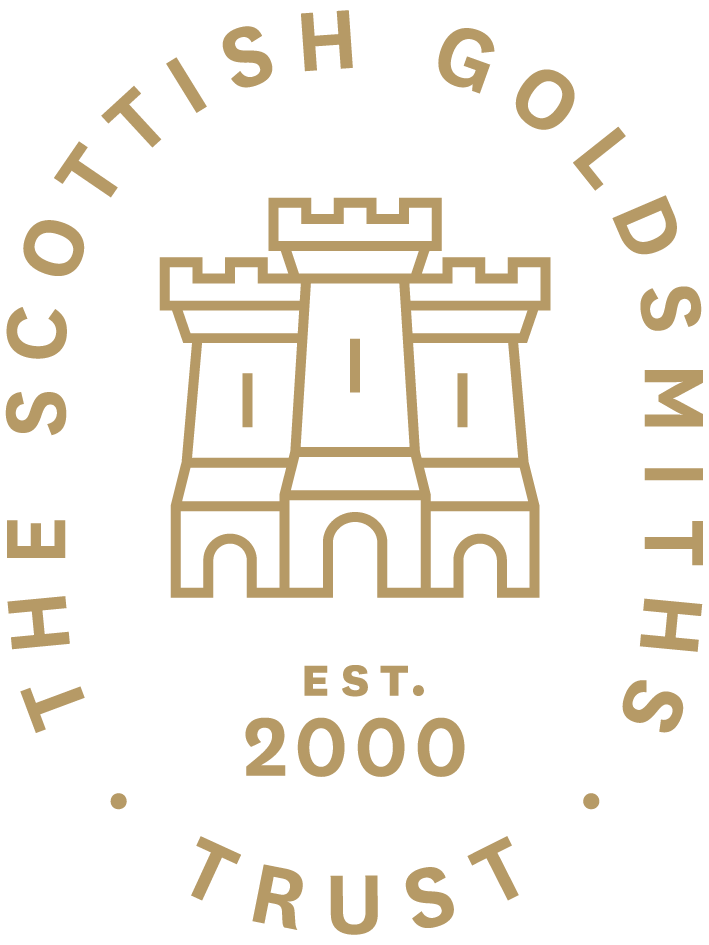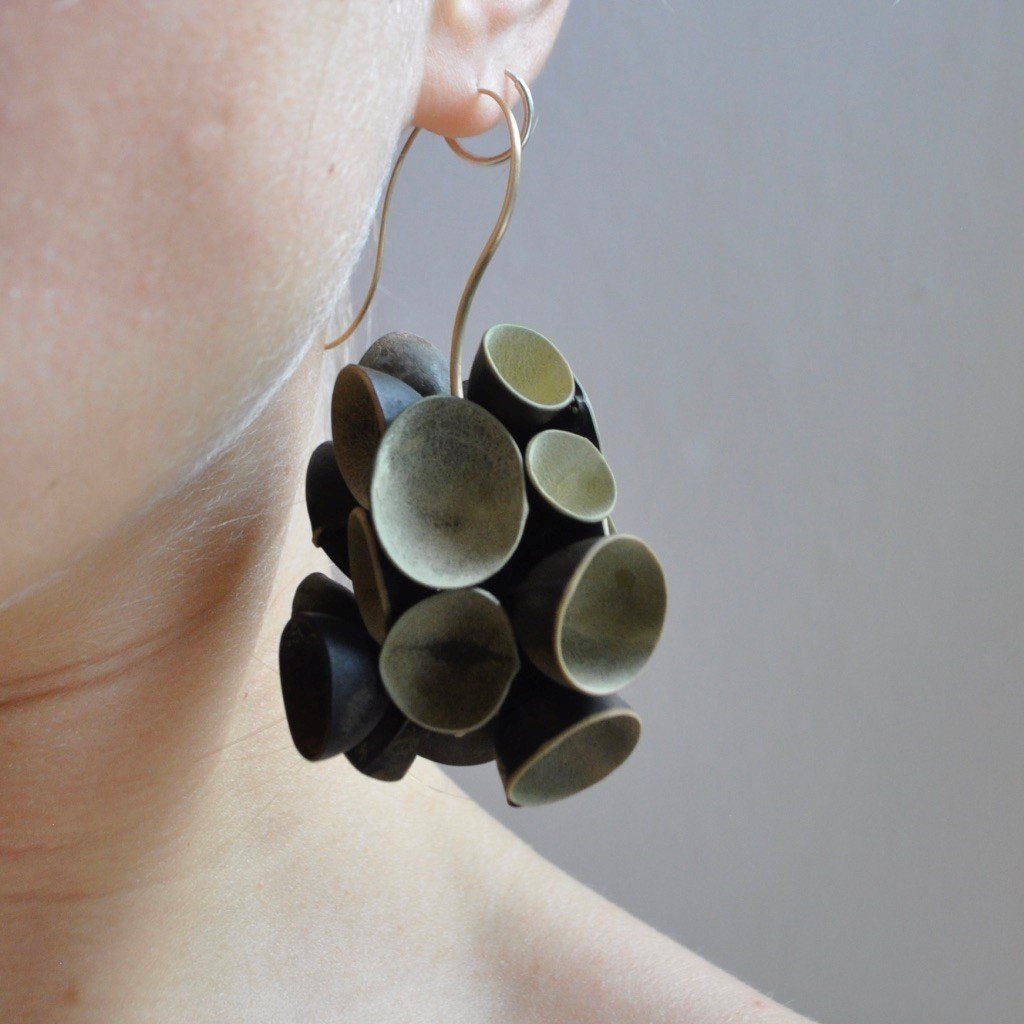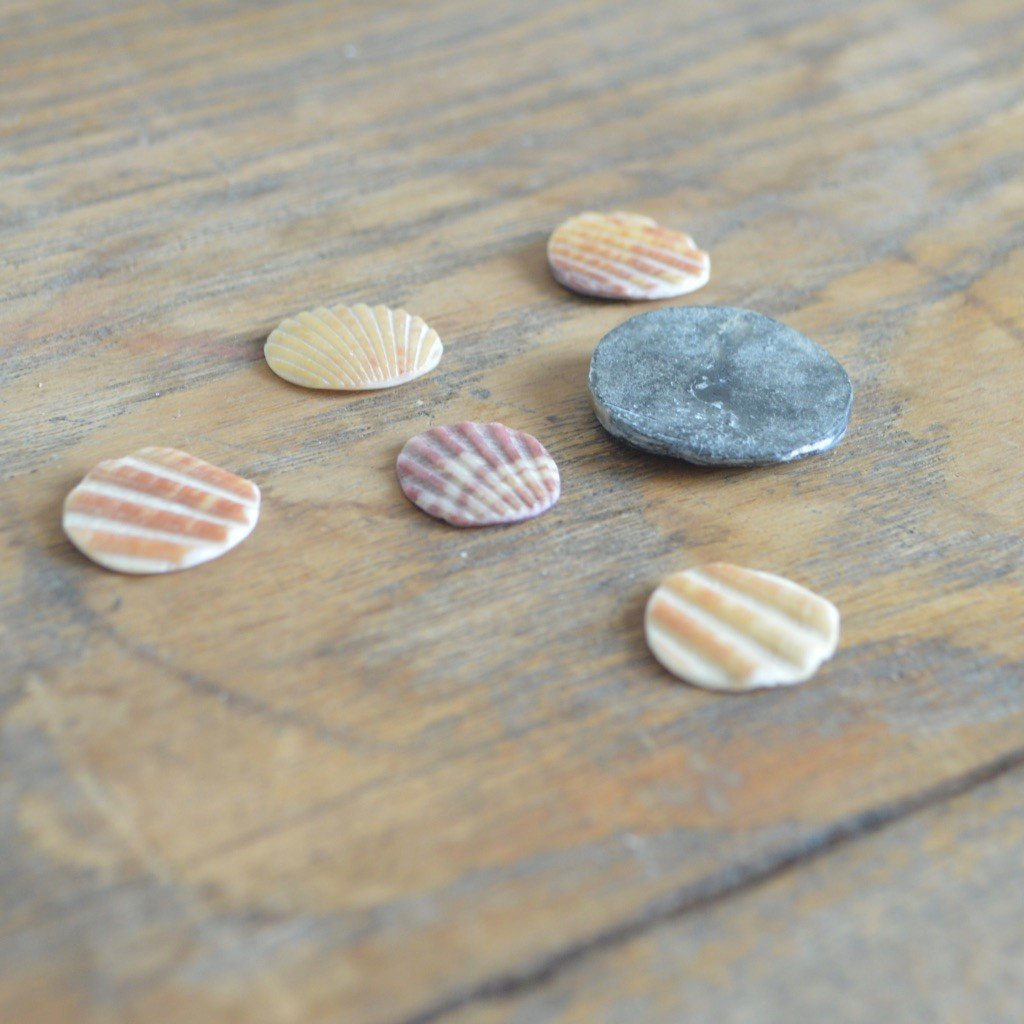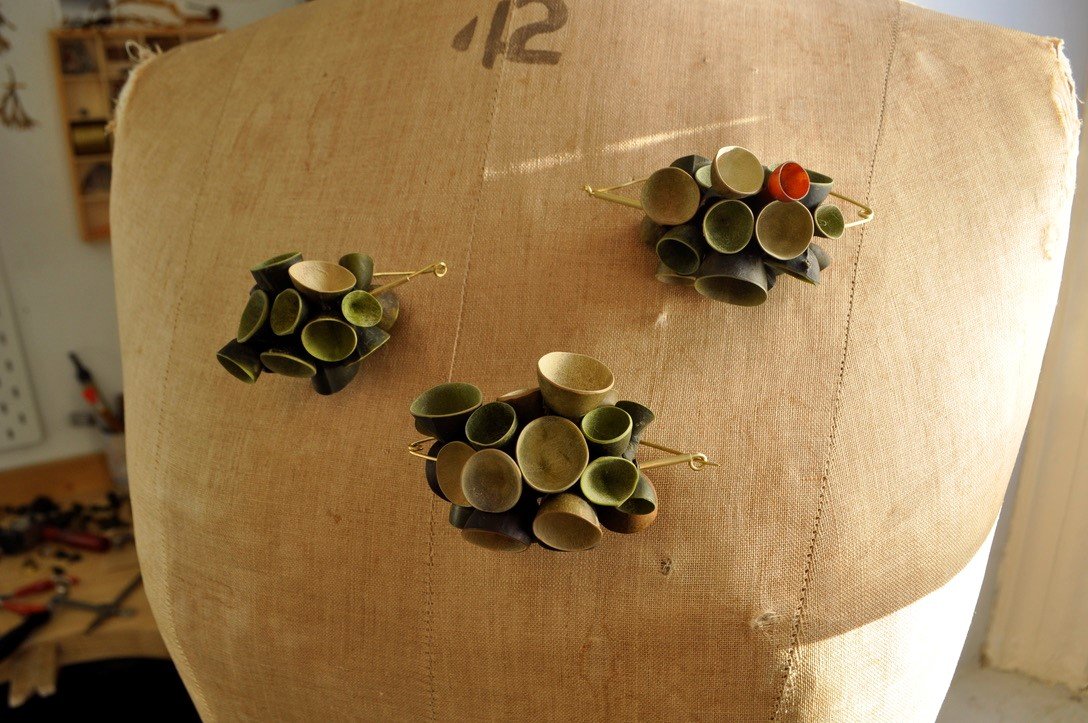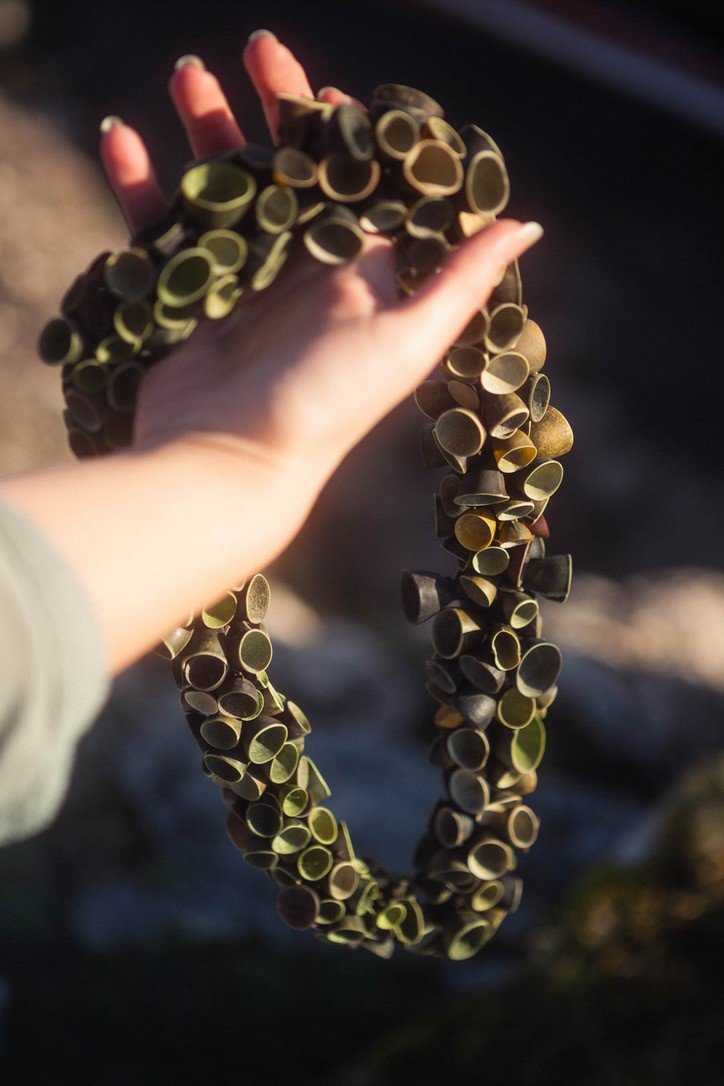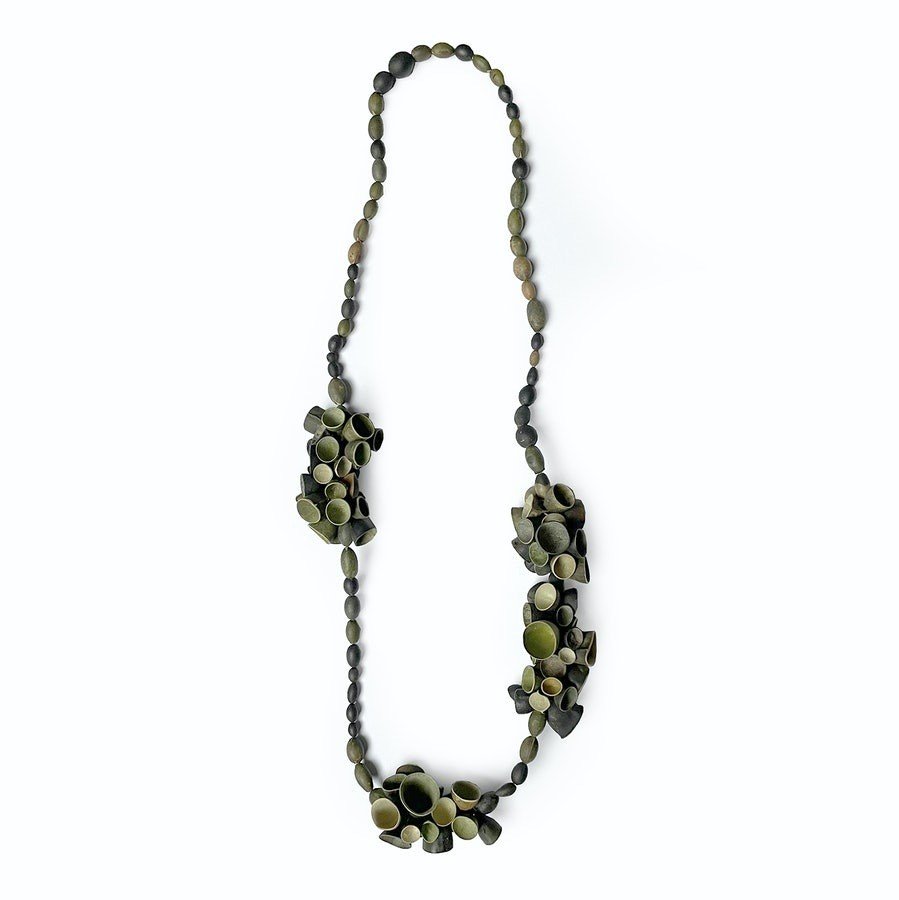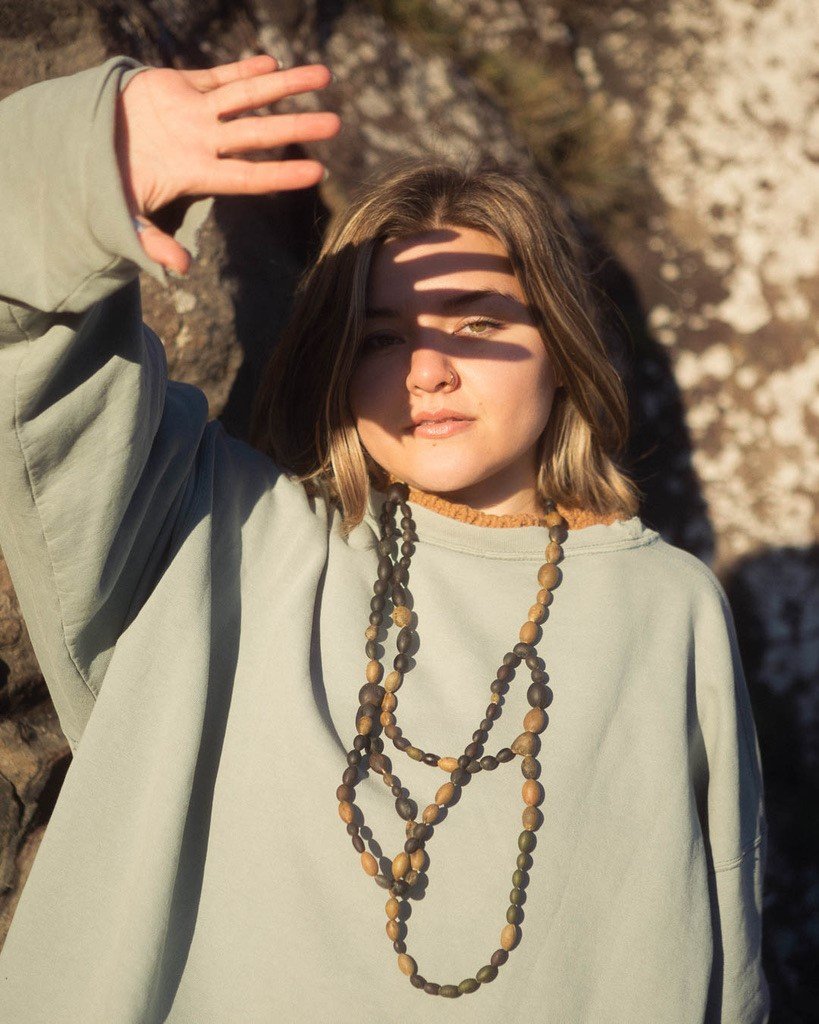Spotlight On: Iona Turner
Spotlight On: Iona Turner
Based in Edinburgh, Iona Turner is a graduate of The Glasgow School of Art and creates ecologically-conscious art jewellery. Iona’s graduate collection, The Seaweed Gatherer, is an ongoing jewellery collection materialised from gathering seaweed. The process is that of careful attention to, and immersion in, seaweeds’ wild ecology. The variations in the seaweed’s detail, namely Knotted Wrack, become the work’s colour pallet and organic pattern.
Iona recently joined the team at The Scottish Goldsmiths Trust as Programme Assistant of Ethical Making, supporting the research and delivery of this programme.
Iona’s work was featured in our 2021 Graduate Showcase at Elements. We caught up with Iona to learn more about how her work and career have developed over the past year.
How did you become interested in jewellery?
I have always loved making and drawing, with a particular enthusiasm for the small details, subtle textures, hidden meanings and clever designs. I’ve always been fascinated by the emotional sentiment behind jewellery making and wearing.
Why did you decide to follow this career path?
In high school, my art teacher suggested I specialise in design as, apparently, I was drawing like a jeweller! She had studies jewellery herself and my aunt had also made a career of jewellery design, so I had representation and inspiration all around me. When I attended The Glasgow School of Art’s open day, the workshop full of tools and flames just drew me in.
Can you tell us what you are currently working on?
The last year has been really exciting. I exhibited my work in-person for the first time since graduating at The Scottish Gallery and I took on a position with The Scottish Goldsmiths Trust as Programme Assistant of the Ethical Making Programme.
Where do you draw inspiration from in your work?
I draw inspiration from the sea, its creatures and other coastal people. Through cold water immersion I met seaweed and became fascinated by its ability to shapeshift. According to the tide, seaweeds’ colours and shapes change drastically to suit submerged, dehydrated and in-between states. Seaweeds’ sub-marine growth patterns created incredible patterns of clustering abundance. I am inspired by coastal peoples who have continued historical practices of gathering seaweed—Feannagan is a practice of Gael crofters on the Western Isles, whereby seaweed fertilises the land. Seaweed transports the rich nutrients of the sea to hill-side land for growth of crops. I intend for my pieces to take seaweed inland to enrich ones’ sense of connection to the sea.
How would you describe your design style?
I like to keep my designs close to nature, to create pieces that look as though they could have washed up on the shoreline.
Tell us about the methods you use in your work.
I work with seaweed in a regenerative way. Gathering of the raw material and making is done in accordance with seaweeds’ natural qualities, sensitive to local ecology. I gather the seaweed frugally, when they have been flung ashore by natural processes, so, there is never a need to inhibit live ecology. In the workshop, seaweed is dried and worked with a jeweller’s tool box. There are no preservatives, treatments or glue cast upon the seaweed. Pieces made without brass or gold are completely biodegradable. If the wearer so desires, they may return the jewels to the sea, or earth, without any negative environmental impacts. The impact could in fact be positive, as seaweed is an effective fertiliser. Pieces with brass or gold are designed for disassembly and then recycling.
What is next for you this year?
I have just been awarded the Jorum Craft Award! I am really excited—this funding will aid my proposed exploration of alternative materials, including shellfish and crustacean by-products. I will be exhibiting at the upcoming Colony of Artists Festival in Abbeyhill, Edinburgh this September, and plan to take part in WASPS Patriothall Open Studios in November.
